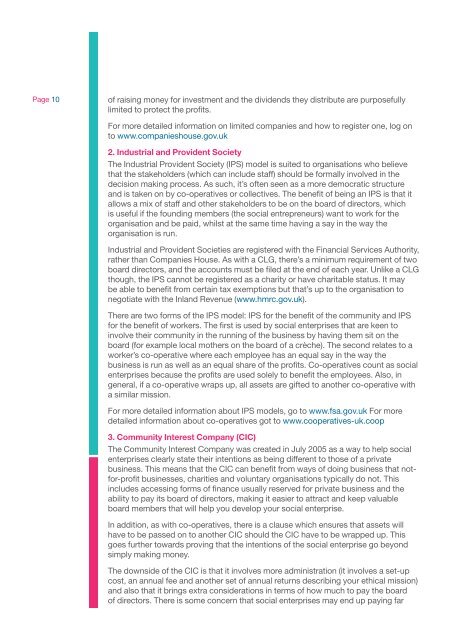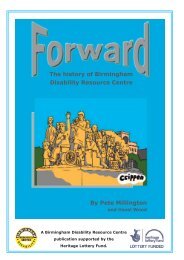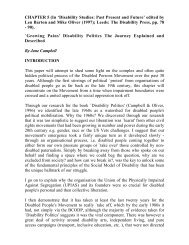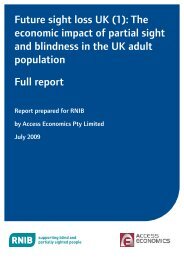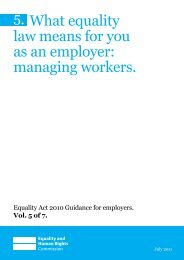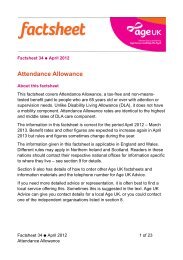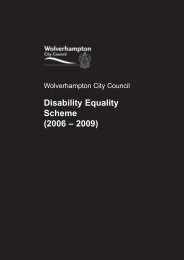The Social Enterprise Starting Point Guide
The Social Enterprise Starting Point Guide
The Social Enterprise Starting Point Guide
You also want an ePaper? Increase the reach of your titles
YUMPU automatically turns print PDFs into web optimized ePapers that Google loves.
Page 10of raising money for investment and the dividends they distribute are purposefullylimited to protect the profits.For more detailed information on limited companies and how to register one, log onto www.companieshouse.gov.uk2. Industrial and Provident Society<strong>The</strong> Industrial Provident Society (IPS) model is suited to organisations who believethat the stakeholders (which can include staff) should be formally involved in thedecision making process. As such, it’s often seen as a more democratic structureand is taken on by co-operatives or collectives. <strong>The</strong> benefit of being an IPS is that itallows a mix of staff and other stakeholders to be on the board of directors, whichis useful if the founding members (the social entrepreneurs) want to work for theorganisation and be paid, whilst at the same time having a say in the way theorganisation is run.Industrial and Provident Societies are registered with the Financial Services Authority,rather than Companies House. As with a CLG, there’s a minimum requirement of twoboard directors, and the accounts must be filed at the end of each year. Unlike a CLGthough, the IPS cannot be registered as a charity or have charitable status. It maybe able to benefit from certain tax exemptions but that’s up to the organisation tonegotiate with the Inland Revenue (www.hmrc.gov.uk).<strong>The</strong>re are two forms of the IPS model: IPS for the benefit of the community and IPSfor the benefit of workers. <strong>The</strong> first is used by social enterprises that are keen toinvolve their community in the running of the business by having them sit on theboard (for example local mothers on the board of a crèche). <strong>The</strong> second relates to aworker’s co-operative where each employee has an equal say in the way thebusiness is run as well as an equal share of the profits. Co-operatives count as socialenterprises because the profits are used solely to benefit the employees. Also, ingeneral, if a co-operative wraps up, all assets are gifted to another co-operative witha similar mission.For more detailed information about IPS models, go to www.fsa.gov.uk For moredetailed information about co-operatives got to www.cooperatives-uk.coop3. Community Interest Company (CIC)<strong>The</strong> Community Interest Company was created in July 2005 as a way to help socialenterprises clearly state their intentions as being different to those of a privatebusiness. This means that the CIC can benefit from ways of doing business that notfor-profitbusinesses, charities and voluntary organisations typically do not. Thisincludes accessing forms of finance usually reserved for private business and theability to pay its board of directors, making it easier to attract and keep valuableboard members that will help you develop your social enterprise.In addition, as with co-operatives, there is a clause which ensures that assets willhave to be passed on to another CIC should the CIC have to be wrapped up. Thisgoes further towards proving that the intentions of the social enterprise go beyondsimply making money.<strong>The</strong> downside of the CIC is that it involves more administration (it involves a set-upcost, an annual fee and another set of annual returns describing your ethical mission)and also that it brings extra considerations in terms of how much to pay the boardof directors. <strong>The</strong>re is some concern that social enterprises may end up paying far


